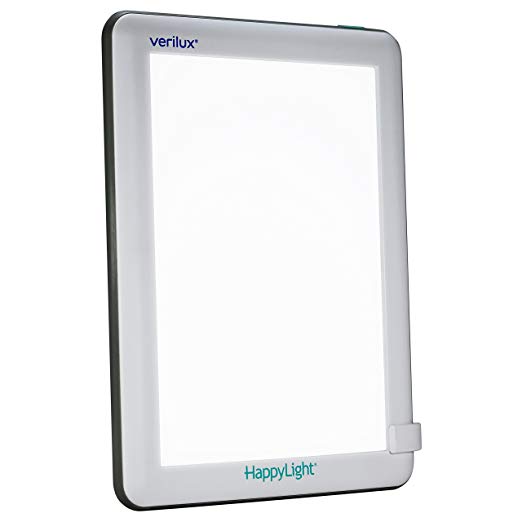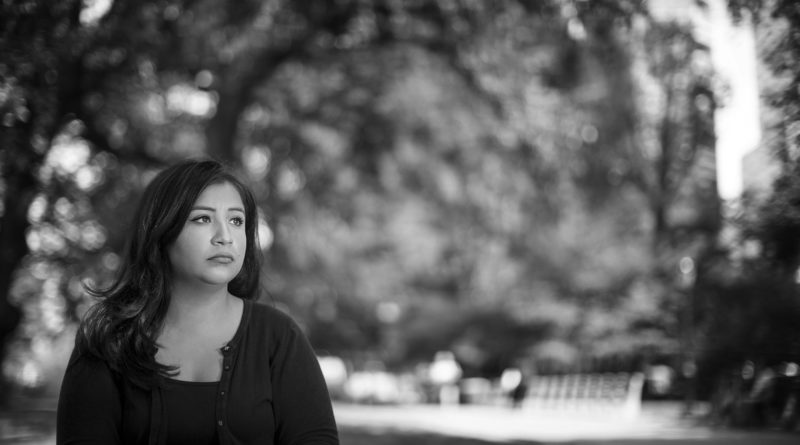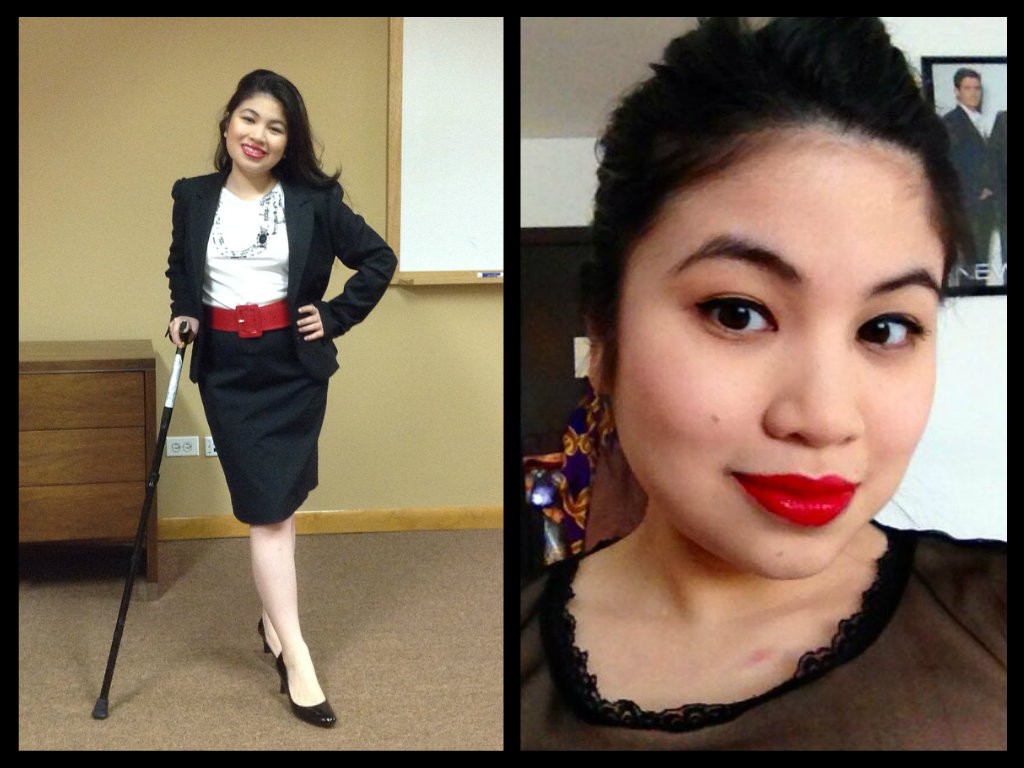6 Tips for Managing Seasonal Affective Disorder
What is Seasonal Affective Disorder (SAD)?
Mayo Clinic defines Seasonal Affective Disorder as “a type of depression that’s related to changes in seasons — SAD begins and ends at about the same times every year…” Like many people, I have always struggled with depression through the late fall and winter (which is entirely too long in Chicago). Many parts of the country experience winter longer, and are still getting snow in April. But did you know that Seasonal Affective Disorder is not just something that happens to people between November and February? There are also many people who have “Reverse SAD,” which is triggered by the onset of spring or summer.
Signs & Symptoms of SAD Include:
- Feeling depressed most of the day, nearly every day
- Losing interest in activities you once enjoyed
- Having low energy
- Having problems with sleeping
- Experiencing changes in your appetite or weight
- Feeling sluggish or agitated
- Having difficulty concentrating
- Feeling hopeless, worthless or guilty
- Having frequent thoughts of death or suicide
Fall/Winter SAD vs. Reverse SAD Symptoms
You can find differences in symptoms between Fall & Winter SAD vs Spring & Summer SAD here.
How Bipolar Disorder & SAD Interact
Mayo Clinic provides this warning, “In some people with bipolar disorder, spring and summer can bring on symptoms of mania or a less intense form of mania (hypomania), and fall and winter can be a time of depression.”

My Story: How Light Therapy Has Helped Me Manage Winter SAD
I have always struggled with depression the winter, exacerbated by having bipolar 2 disorder. Here in Chicago, we joke that we have two seasons: winter and construction. SAD is something I experienced long before I was diagnosed with bipolar 2 at 18. When I was a freshman in high school, there were times I would hide from the what I labeled in my mind “the darkness” by retreating to my closet. Since I had no concept or vocabulary for mental illness at the time, I could not yet ask for professional help. Even after my bipolar disorder improved dramatically with talk therapy, medication, and building a support network, the winter depression lingered. I would be more lethargic during the winter, and experience more crying spells. A malaise would come over my whole body. At 22, my then-psychiatrist diagnosed me with Seasonal Affective Disorder and prescribed light therapy. Staring at a box of light for 15 minutes daily changed my life! It regulated my circadian rhythms/sleep-wake cycles and regulated my moods (as much as they can be “regular” for a person with bipolar 2 and many autoimmune conditions). This made my winter depressions less severe. Light therapy also had positive effects on my bipolar disorder. Light boxes emit light that is more like natural sunlight as opposed to indoor light. My light box is compact, and I am able to use it when I travel.
6 Tips for Managing SAD:
- Light box therapy, which is sometimes referred to as “photo therapy.” Light boxes are discussed in greater detail below in my story, stories from readers, and my interview with Dr. David Susman.
- Talk therapy or psychotherapy. Dr. Susman describes the benefits of therapy, which includes CBT, cognitive behavioral therapy. Susman also talks about how a professional might prescribe medications depending on the individual’s situation. (Related: 6 Cheap Ways to Get Mental Health Care and my article, 8 Tips For Maximizing Therapy)
- Using mood tracker apps like Daylio: Mood Tracker and Micro Diary. The other day I was feeling really depressed so I went on Daylio, a mood disorder app, and looked at what activities I engage in on most “good days,” and I decided to listen to Black Gospel music. Because Black Gospel music is one of those things that lifts my mood. Apps can help us identify triggers (what makes our moods worse and triggers depression) as well as positive influences that improve our moods. (See my article Top 29 Mental Health Apps: Recommended by Users With Lived Experience).
- Exercise. People are understandably less active in the winter, but there are many mental health benefits to exercise. It’s important to have activities you can do at home when the weather is horrid. Adding an accountability partner also helps. (See my article, 6 Ideas: How to Exercise When You Are Depressed and 4 Mental Health Benefits of Exercise).
- Stay connected. We live in a society that is always “on” but not necessarily connected. Sure, we’re on Facebook, SnapChat, Instagram, Twitter but are we really connecting? Whether it’s talking on the phone with someone or Skyping with your best friend who lives halfway across the country or having dinner with someone, find ways to stay connected.
- Finding an outlet. One of my followers described how gardening as an outlet. Where I live, finding outdoor activities half the year (AKA winter) is hard due to harsh weather conditions so I find refuge in reading, music, and sometimes painting.
Resources for Reverse SAD (Springtime or Summer)
Reverse SAD, which is triggered by the onset of Spring or Summer, gets less awareness so I curated some resources below:
- April Is The Cruelest Month: Why Some People Get Depressed in the Spring (everydayHEALTH)
- When Summer Makes You Sad (everydayHEALTH)
- Reverse Seasonal Affective Disorder: SAD In The Summer (Psychology Today)
Readers Share Their Experiences With SAD
- Jaime (who lives with SAD and has been diagnosed with Major Depression, OCD, and anxiety disorders) in Iowa City, “I don’t know when it [SAD] is going to start but it lasts forever. We had snow in May last year! I do not have an official diagnosis but my therapist prescribed light therapy, and she is the one who prescribes all my meds. I use an older light box–it’s 3 feet by 1.5 feet. It’s huge! I bought a timer to help me so I can turn it off when I’m done. Lately, I’ve been using it during certain hours between 6:30 to 7:30 am. The majority of my hospitalizations have been between September to March; I feel like Seasonal Affective Disorder plays a role in that…Little timers can be purchased at Target…When I have a dip in my moods, I am more irritable, have distorted thoughts that I usually handle well, and I don’t have the energy to handle them. But this is the best I’ve done in a decade. Light therapy helps me get up in the morning. It wakes my brain up. I sit next to it in my bed, and do it at the same time everyday…it gives me energy to get out of the house; I’m more likely to engage with people…My advice to people with SAD is to try it [light therapy] if you can get your hands on it. Unfortunately, they’re not cheap but if you can access one, try it for a couple of weeks.”
- Caitlyn (diagnosed with Reverse SAD), “I actually have dysthymia, which turns into reverse SAD in the springtime every year. In a couple of weeks is actually when I’ll be upping my dose of Wellbutrin, because I’m practiced enough at this now to know I need to head it off before it gets bad. No one could figure it out for YEARS. It wasn’t until I looked at medical records and realized that my hospitalizations had always occurred in the spring, my weight loss in the spring, etc., that I started looking into it. And found a doctor who understood it…The only medication that works for me is buproprion [generic name for Wellbutrin], so I up that in the spring/summer. I also up my therapy sessions, and I take to gardening. Mine manifests as agitation more than sadness (which is common of reverse), so doing things that are calming helps.
Where To Buy Light Boxes
A lot of people have asked me what light box I use. Apparently, my light box of over a decade (which still works fine) has been discontinued. (For reference, I use this compact, portable Apollo Health GoLite P2 Box, which you can find here.) *I did some research on light boxes currently available:
- Verilux HappyLight Lucent 10,000 Lux LED Bright White Therapy Lamp (Best-Selling; $44.95)
- Verilux HappyLight Full-Size 10,000 Lux Bright Light Therapy Full Spectrum Lamp (Highest rated; $79.95)
- Verilux HappyLight Compact Personal, Portable Light Therapy Energy Lamp (Lowest Price; $39.95)
I wanted to provide a different perspective than mine. So I interviewed David Susman, PhD, who is a clinical psychologist, mental health advocate, writer, blogger, and professor.
My Interview With David Susman, PhD
JG: How can a person tell if they have SAD as opposed to the “winter blues”?
DS: Many of us may feel a little down, tired or sluggish in the winter. But to officially diagnose what is commonly referred to as seasonal affective disorder, a mental health professional compares the person’s symptoms with a list of established diagnostic criteria in the DSM 5 (the Diagnostic and Statistical Manual of Mental Disorders, 5th edition). A person would need to first meet the criteria for either a major depressive disorder or a bipolar disorder.
Next, there are additional criteria to meet the “with seasonal pattern” modifier for these mood disorders. In other words, in the DSM 5, there is no “official” diagnosis of “seasonal affective disorder.” Someone would either have a “major depressive disorder with seasonal pattern” or a “bipolar disorder with seasonal pattern.”
That’s a lot of technical language. But the point is that it’s often very difficult for a person to self-diagnose these conditions. Getting a professional assessment is critical to conclusively determine if the condition is present.
But some things to look for that may suggest this condition are a consistent pattern (2 or more years in a row) of onset of a significant mood change that is associated with a particular time of year. The most common pattern is getting depressed in the fall and winter, with the mood improving in the spring. Other common symptoms include sleeping too much, overeating, weight gain, low energy, withdrawal (“hibernating”) and a craving for carbohydrates.
This condition is more common in areas with shorter hours of daylight in the winter. Young adults and women seem to be at higher risk. A family history of depression also increases the risk.
JG: When seeing patients who have SAD, how do you help them? Also, many people have found light therapy effective. What are your thoughts on light therapy?
DS: There are three primary treatments for a mood disorder with a seasonal pattern: 1) medications; 2) psychotherapy; 3) light therapy. These treatments are often used in combination. All should be done in consultation with a professional.
- Briefly, several antidepressant medications called SSRI’s (serotonin-specific reuptake inhibitors) are used to treat seasonal mood conditions. In addition, the FDA has approved a different type of antidepressant, bupropion, to treat this condition. Use of any antidepressants should be carefully monitored by the prescribing provider, particularly if someone has a bipolar diagnosis or has shown prior sensitivity to antidepressants.
- Light therapy has been shown to be effective. It involves sitting in front of a light box each day, typically first thing in the morning. (A typical recommendation is to sit in front of a 10,000-lux light box, 20 to 30 minutes, about 16 to 24 inches from your face. Let the light enter your eyes indirectly, don’t stare right at the light. Boxes that are not as bright require longer sessions.)
- A form of psychotherapy called cognitive-behavioral therapy or CBT has also been proven effective. When CBT was compared with light therapy, patients receiving CBT had less severe depression in the long run and fewer relapses.
JG: When I conducted polls asking people on social media if they experienced SAD, a minority of people said they experience “Reverse Seasonal Affective Disorder.” Is this common?
DS: This would describe someone who perhaps noted a mood change more so in the summer than in the winter. While this can occur, it is much less frequent than the typical seasonal pattern of decreased mood in the winter months.
Follow David Susman!
I encourage you to follow Dr. David Susman! His blog provides “inspiration and resources for better mental health.” You can also follow David on Twitter, Facebook, Instagram, and LinkedIn.
Disclaimer: I am not a doctor! Info posted here should not be considered medical advice; it is not intended to replace consultation with physicians and mental healthcare providers.
I am an Amazon Associate.





These 6 tips would be a huge help for you to manage having a seasonal affective disorder.